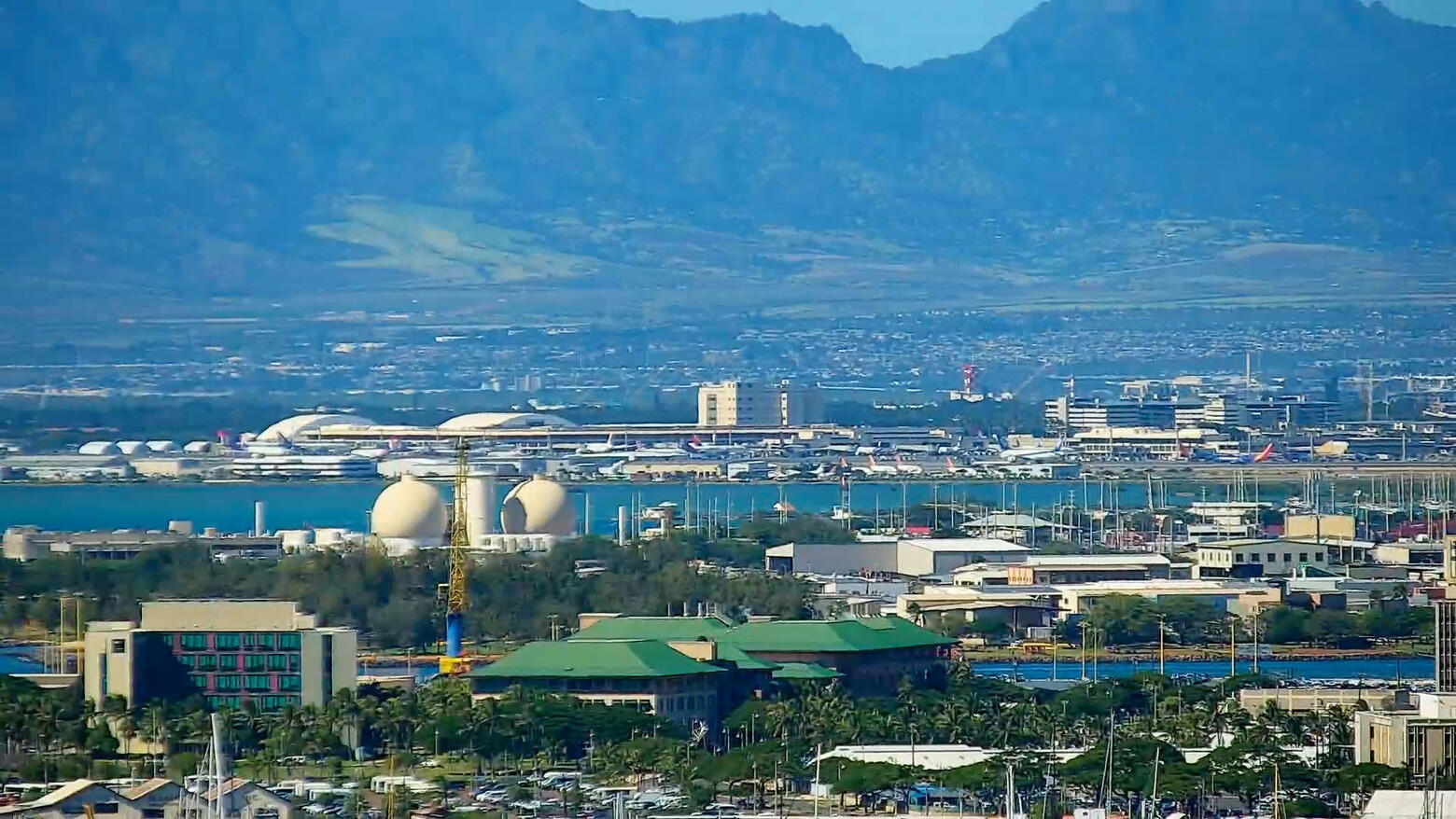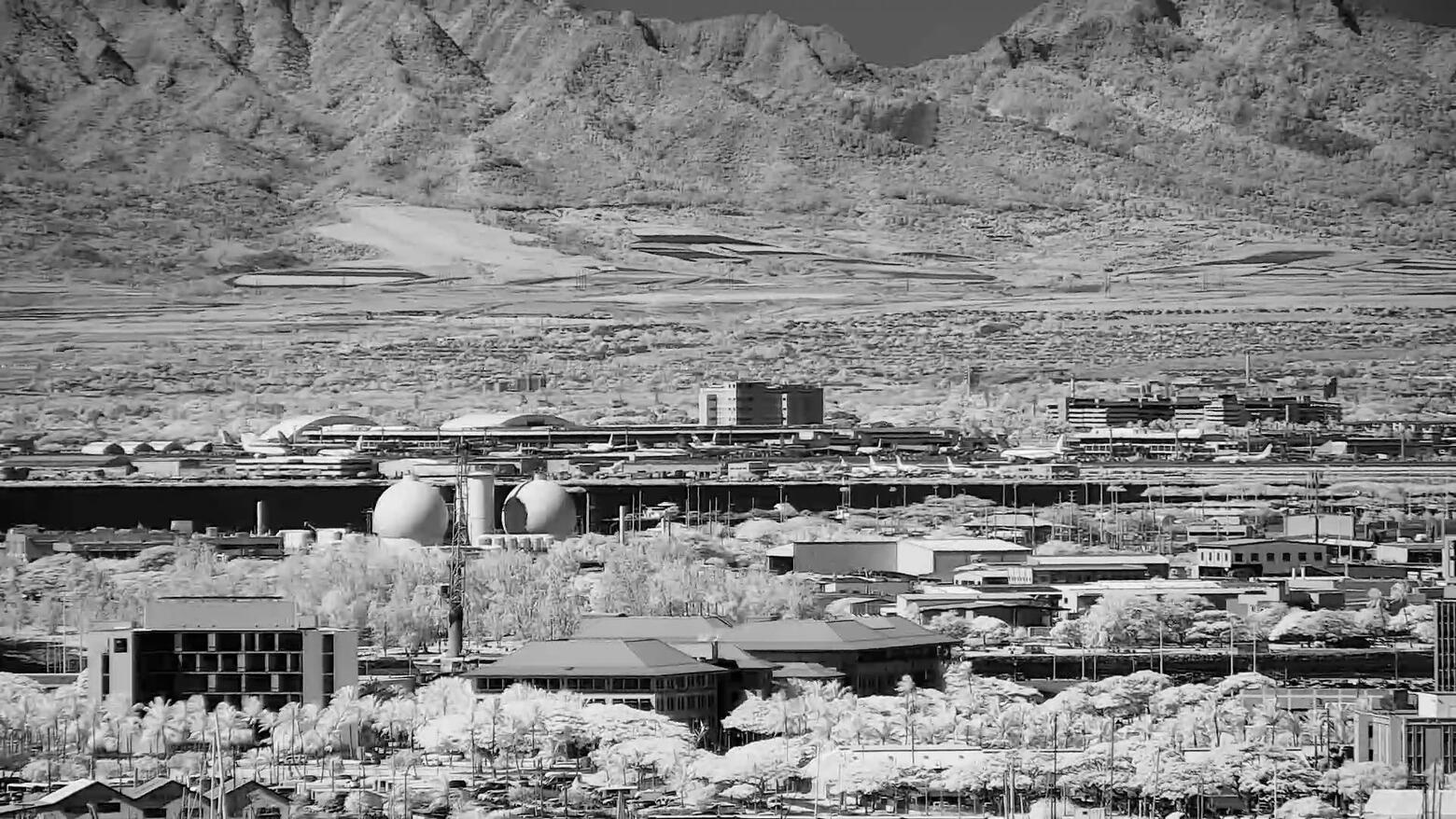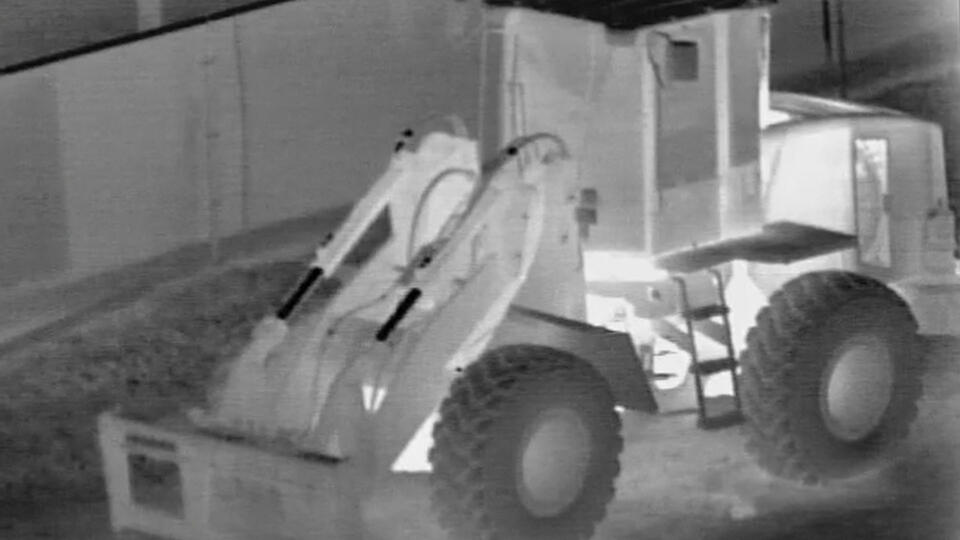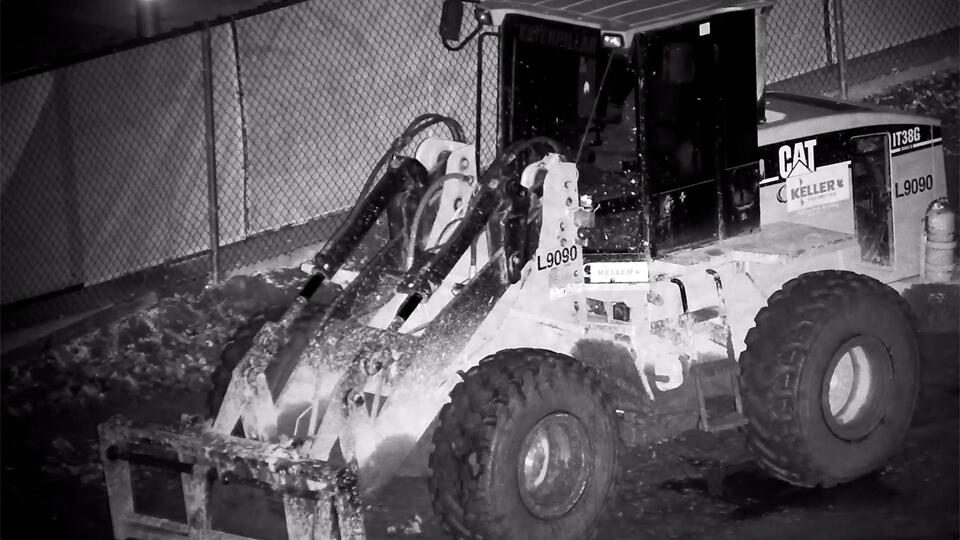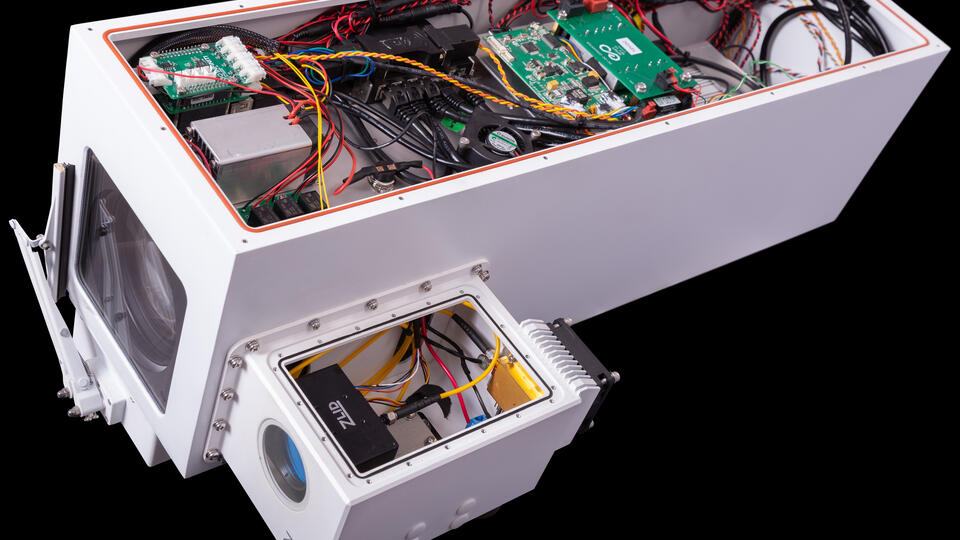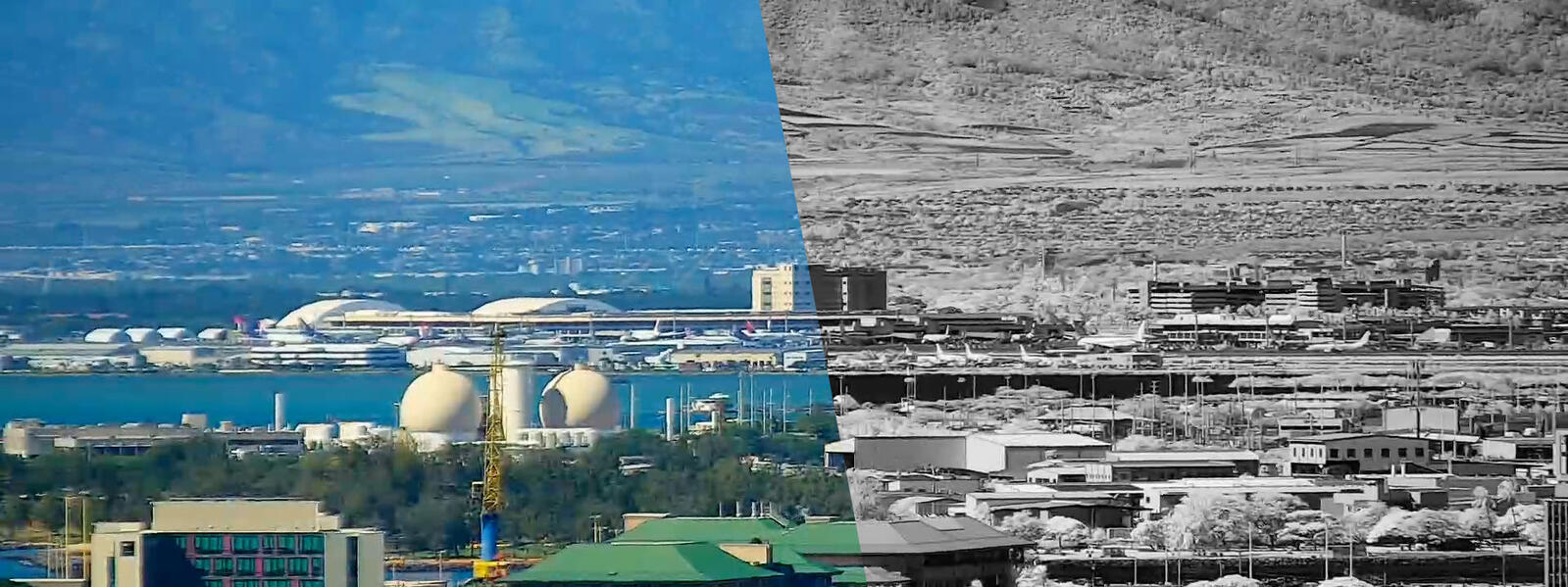
NIR (Near-Infrared) Imaging (Fog/Haze Filter)
Near Infrared (NIR) is a subset of the infrared band of the electromagnetic spectrum, covering the wavelengths ranging from 0.7 to 1.4 microns. This wavelength is just outside the range of what humans can see and can sometimes offers clearer details than what is achievable with visible light imaging.
NIR is very close to human vision but removes the color wavelengths, which results in most objects looking very similar to an image that has been converted to black and white. One exception is trees and plants, which are highly reflective in the NIR wavelength and thus appear much brighter than they do in color. That difference in reflectivity of certain objects, in combination with reduced atmospheric haze and distortion in the NIR wavelength, means that detail and visibility are often improved at long ranges, as shown in the comparison image below:
